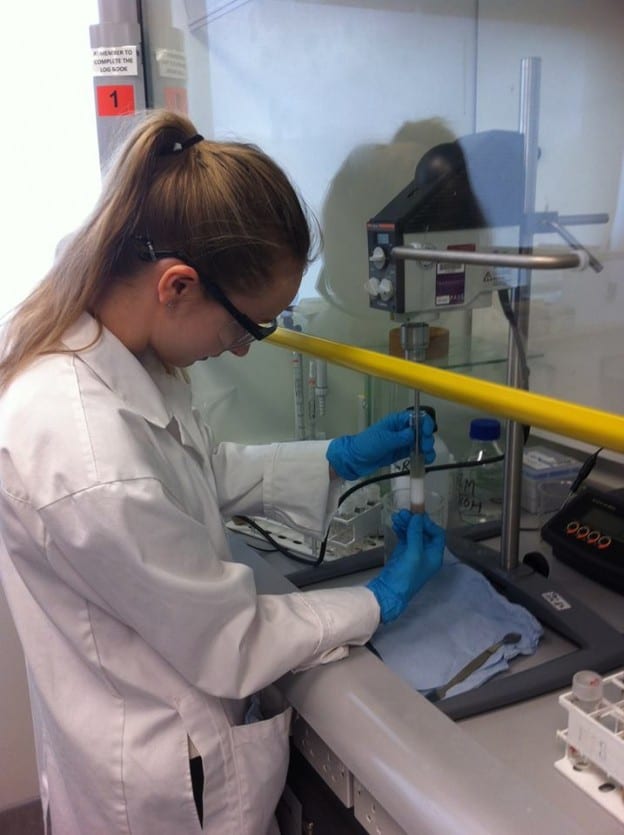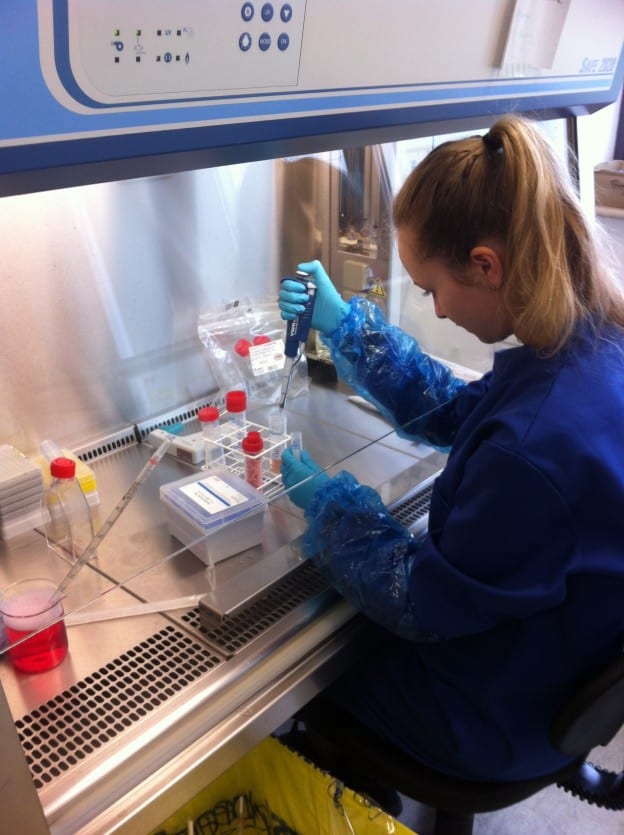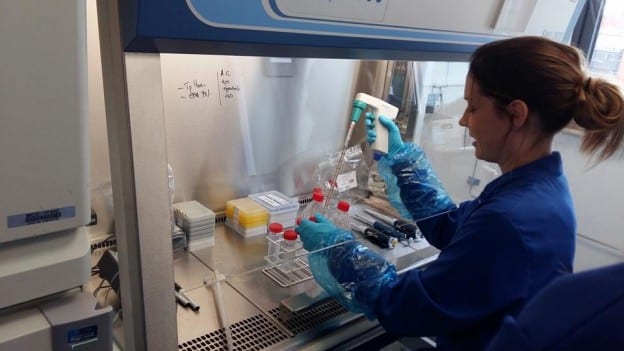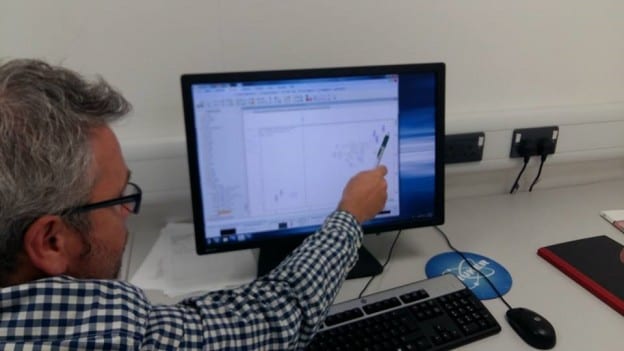Preparation of pig organ samples to run on the NMR machine began with cutting and accurately weighing 4 grams of each organ: liver, heart and kidney.


Preparation of pig organ samples to run on the NMR machine began with cutting and accurately weighing 4 grams of each organ: liver, heart and kidney.

The aim of our project was to determine the effects of cannabinoid drugs on HL-60 cells and whether they had the ability to induce apoptosis. To do this we initially chose 4 different cannabinoid drugs which were incubated with HL-60 cells for 2 hours. The drugs used were: AM630, AM281, Oleamide and 0-2545. These were chosen as they are a mixture of synthetic and endocannabinoids. Continue reading

HL-60 cells are grown in suspension and therefore must be treated differently to (the more common) adherent cultures. In order to keep the cells alive and growing well, the culture medium must be changed regularly. This allows nutrients and growth factors to be replenished and the cells to be re-seeded to a concentration which minimises overcrowding and cell death. From previous studies we found that the HL-60 cell line grows favourably at around 1×105 cells/ml. Therefore, we typically re-seeded the cells at this density every 2 – 3 days. Continue reading

Dr. Prior firstly described the mechanisms and principles behind NMR spectroscopy; in that a very strong magnetic field, maintained by a large current (60 Amps) flowing around a circular magnet (supercooled by liquid nitrogen and liquid helium “jackets”), affects the polarity of nucleus (also known as protons) within the sample. This allows biological and chemical samples with different compositions to be identified and distinguished from each other. This is because nuclear spin gives them the properties of a magnet. However, he also explained that it is highly insensitive because only one in a million protons will align with the magnetic field generated by the NMR, rather than against it.

COSHH
The Control of Substances Hazardous to Health Regulations (COSHH) 2002, is a United Kingdom Statutory Instrument that states general requirements on employers and public bodies, such as universities to protect employees and other persons (such as students) from the hazards of substances used at work or in their place of study by risk assessment, control of exposure, health surveillance and incident planning. To determine all potential risks of chemicals, MSDS (Material Data Safety Sheet) which outlines all the risks and control measures that should be implemented. Continue reading